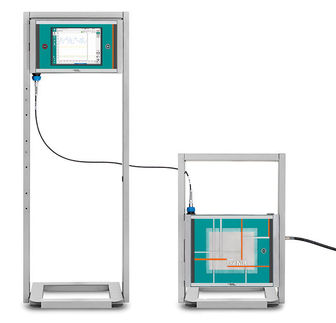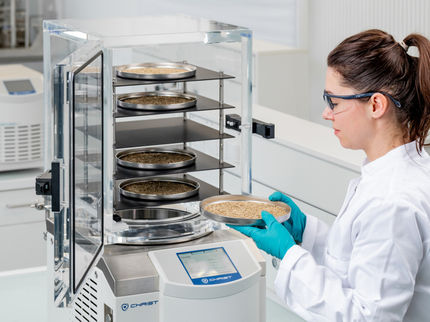Metachromatic leukodystrophy
Metachromatic leukodystrophy
Classification & external resources
| ICD-10
| E75.2
|
| ICD-9
| 330.0
|
| OMIM
| 250100
|
| DiseasesDB
| 8080
|
| eMedicine
| ped/2893
|
Metachromatic leukodystrophy (MLD, also called Arylsulfatase A deficiency) is the most common form of a family of genetic diseases known as the leukodystrophies, diseases which affect the growth and/or development of myelin, the fatty covering which acts as an insulator around nerve fibers throughout the central and peripherial nervous systems .
Causes
MLD is directly caused by a deficiency of the enzyme arylsulfatase A. Without this enzyme, sulfatides build up in many tissues of the body, eventually destroying the myelin of the nervous system. Inheritance follows an autosomal recessive pattern.
Genetics
MLD has an autosomal recessive inheritance pattern. The inheritance probabilities per birth are as follows:
- If both parents are carriers:
- 25% (1 in 4) children will have the disorder
- 50% (2 in 4) children will be carriers (but unaffected)
- 25% (1 in 4) children will be free of MLD - unaffected child that is not a carrier
- If one parent is affected and one is free of MLD:
- 0% (0) children will have the disorder - only one parent is affected, other parent always gives normal gene
- 100% (4 in 4) children will be carriers (but unaffected)
- If one parent is a carrier and the other is free of MLD:
- 25% (1 in 4) children will be carriers (but unaffected)
- 75% (3 in 4) children will be free of MLD - unaffected child that is not a carrier
For further information, see recessive gene and dominance relationship. Also, consult the MLD genetics page.
Symptoms and forms
Like many other genetic disorders that affect lipid metabolism, there are several forms of MLD, which are late infantile, juvenile, and adult.
In the late infantile form, which is the most common form MLD, affected children begin having difficulty walking after the first year of life. Symptoms include muscle wasting and weakness, muscle rigidity, developmental delays, progressive loss of vision leading to blindness, convulsions, impaired swallowing, paralysis, and dementia. Children may become comatose. Untreated, most children with this form of MLD die by age 5, often much sooner.
Children with the juvenile form of MLD (onset between 3-10 years of age) usually begin with impaired school performance, mental deterioration, and dementia and then develop symptoms similar to the late infantile form but with slower progression. Age of death is variable, but normally within 10 to 15 years of symptom onset.
The adult form commonly begins after age 16 as a psychiatric disorder or progressive dementia. Adult-onset MLD progresses more slowly than the late infantile and juvenile forms, with a protracted course of a decade or more.
In rare cases the body can compensate for the deficiency and the person will exhibit no symptoms.
Treatment
There is no cure for MLD, nor a standard form of treatment. Children with advanced juvenile or adult onset, and late infantile patients displaying symptoms have treatment limited to pain and symptom management. Presymptomatic late infantile MLD patients, as well as those with juvenile or adult MLD that are either presymptomatic or displaying mild to moderate symptoms, have the option of bone marrow transplantation (including stem cell transplantation), which may slow down the progression of the disease, or stop its progression in the central nervous system, however results in the peripheral nervous system have been less dramatic and the long term affects of these therapies have show mixed results.
Treatment options for the future that are currently being investigated include gene therapy and enzyme replacement therapy (ERT), substrate reduction therapy (SRT), and potentially an enzyme enhancement therapy (EET).
A team of international researchers and foundations has organized to form an International MLD Registry to create and manage a shared repository of knowledge, including the natural history of MLD. This consortium consists of scientific, academic and industry resources. The registry is not up and operating as of December, 2007, but the team is optimistic that this will change in 2008.
Clinical Trials
Bone Marrow and Stem Cell Transplant Therapies
- Several trials are underway to continue to improve the effectiveness and reduce the risks of bone marrow and stem cell transplants. The active MLD trials are at the University of Minnesota, however, these therapies are available at other institutions. Contact: Paul Orchard, M.D. +1 612-626-2961. (updated December 2007)
Enzyme Replacement Therapy
- Phase II clinical trials are underway in Europe by a Danish company, Zymenex, using Metazym. (updated December 2007)
- Shire Human Genetics is proposing an enzyme replacement therapy.
Gene Therapy
- Two trials are in the planning stages by groups in Europe, one in Italy and one in France. At least one of these research teams is strongly considering a simultaneous trial in the US. (updated December 2007)
Substrate Reduction Therapy
- A research team has privately indicated interest to the MLD Foundation that they are preparing for a SRT trial next year. (updated December 2007)
Clinical trial updates provided by the MLD Foundation
See also
- The Evanosky Foundation
- The MLD Foundation
- The Myelin Project
- The Stennis Foundation
- eMedicine article about MLD by Theodore Moore, MD.
- mld at NIH/UW GeneTests
| Metabolic pathology / Inborn error of metabolism (E70-90, 270-279) |
|---|
| Amino acid | Aromatic (Phenylketonuria, Alkaptonuria, Ochronosis, Tyrosinemia, Albinism, Histidinemia) - Organic acidemias (Maple syrup urine disease, Propionic acidemia, Methylmalonic acidemia, Isovaleric acidemia, 3-Methylcrotonyl-CoA carboxylase deficiency) - Transport (Cystinuria, Cystinosis, Hartnup disease, Fanconi syndrome, Oculocerebrorenal syndrome) - Sulfur (Homocystinuria, Cystathioninuria) - Urea cycle disorder (N-Acetylglutamate synthase deficiency, Carbamoyl phosphate synthetase I deficiency, Ornithine transcarbamylase deficiency, Citrullinemia, Argininosuccinic aciduria, Hyperammonemia) - Glutaric acidemia type 1 - Hyperprolinemia - Sarcosinemia |
|---|
| Carbohydrate | Lactose intolerance - Glycogen storage disease (type I, type II, type III, type IV, type V, type VI, type VII) - fructose metabolism (Fructose intolerance, Fructose bisphosphatase deficiency, Essential fructosuria) - galactose metabolism (Galactosemia, Galactose-1-phosphate uridylyltransferase galactosemia, Galactokinase deficiency) - other intestinal carbohydrate absorption (Glucose-galactose malabsorption, Sucrose intolerance) - pyruvate metabolism and gluconeogenesis (PCD, PDHA) -
Pentosuria - Renal glycosuria |
|---|
| Lipid storage | Sphingolipidoses/Gangliosidoses: GM2 gangliosidoses (Sandhoff disease, Tay-Sachs disease) - GM1 gangliosidoses - Mucolipidosis type IV - Gaucher's disease - Niemann-Pick disease - Farber disease - Fabry's disease - Metachromatic leukodystrophy - Krabbe disease
Neuronal ceroid lipofuscinosis (Batten disease) - Cerebrotendineous xanthomatosis - Cholesteryl ester storage disease (Wolman disease) |
|---|
| Fatty acid metabolism | Lipoprotein/lipidemias: Hyperlipidemia - Hypercholesterolemia - Familial hypercholesterolemia - Xanthoma - Combined hyperlipidemia - Lecithin cholesterol acyltransferase deficiency - Tangier disease - Abetalipoproteinemia
Fatty acid: Adrenoleukodystrophy - Acyl-coA dehydrogenase (Short-chain, Medium-chain, Long-chain 3-hydroxy, Very long-chain) - Carnitine (Primary, I, II) |
|---|
| Mineral | Cu Wilson's disease/Menkes disease - Fe Haemochromatosis - Zn Acrodermatitis enteropathica - PO43− Hypophosphatemia/Hypophosphatasia - Mg2+ Hypermagnesemia/Hypomagnesemia - Ca2+ Hypercalcaemia/Hypocalcaemia/Disorders of calcium metabolism |
|---|
Fluid, electrolyte
and acid-base balance | Electrolyte disturbance - Na+ Hypernatremia/Hyponatremia - Acidosis (Metabolic, Respiratory, Lactic) - Alkalosis (Metabolic, Respiratory) - Mixed disorder of acid-base balance - H2O Dehydration/Hypervolemia - K+ Hypokalemia/Hyperkalemia - Cl− Hyperchloremia/Hypochloremia |
|---|
| Purine and pyrimidine | Hyperuricemia - Lesch-Nyhan syndrome - Xanthinuria |
|---|
| Porphyrin | Acute intermittent, Gunther's, Cutanea tarda, Erythropoietic, Hepatoerythropoietic, Hereditary copro-, Variegate |
|---|
| Bilirubin | Unconjugated (Lucey-Driscoll syndrome, Gilbert's syndrome, Crigler-Najjar syndrome) - Conjugated (Dubin-Johnson syndrome, Rotor syndrome) |
|---|
| Glycosaminoglycan | Mucopolysaccharidosis - 1:Hurler/Hunter - 3:Sanfilippo - 4:Morquio - 6:Maroteaux-Lamy - 7:Sly |
|---|
| Glycoprotein | Mucolipidosis - I-cell disease - Pseudo-Hurler polydystrophy - Aspartylglucosaminuria - Fucosidosis - Alpha-mannosidosis - Sialidosis |
|---|
| Other | Alpha 1-antitrypsin deficiency - Cystic fibrosis - Amyloidosis (Familial Mediterranean fever) - Acatalasia |
|---|
|







